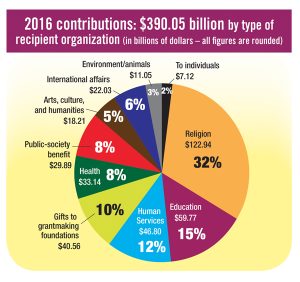Fundraising prospects of the M. D. Anderson Cancer Center at the University of Texas, Houston, can view a DVD that shows the center’s success stories.
"We track the success of our proposal to the different mediums we use," said Patrick Mulvey, vice president for development at M. D. Anderson. "Over the past five years the DVDs and videos gave us an average increase in gifts of 30 percent and the value of the total gifts climbed by 25 percent."
Anderson’s message in the DVDs is that the center offers a place of hope with patient-care research. The hospital is a stand-alone comprehensive cancer center, one of the three cancer centers created by the National Cancer Act of 1971 under then-President Richard Nixon.
Mulvey runs a development office that contains a comprehensive development department, ranging from smaller gifts to major gifts. He also handles a large direct mail program. The printed medium along with cable and television serve more by accenting awareness rather than fundraising. The DVDs are used in fundraising appeals, as well as on the hospital’s home page.
Hospitals nationwide have been increasing their activity in technology-driven development and spending on fundraising in general, according to Julie Lane, managing director of the Philanthropy Leadership Council of The Advisory Board Company (ABC), a membership association of 2,600 hospitals, health systems and universities.
In a Council Performance Benchmarking Initiative survey, spending by the respondents of 116 development offices and foundations of hospitals increased 18 percent between the fiscal years 2004 and 2007. In 42 percent of the respondents, spending growth hit or exceeded 20 percent.
Chris Layhe, president of Chris Layhe Associates, Inc., in San Francisco, is producing 22 videos for the Tampa-based Shriners Hospitals for Children. The videos show the system’s ability to help children.
Layhe aims to produce one video on education and another to work with standard marketing as a public relations piece that can be made available to local television stations for specials. A new application is a virtual tour of the hospital where viewers can watch a surgical procedure. The seven-minute piece will be available on the Shriners’ Web site so interested donors or patients can learn the actual details.
"This isn’t used to direct viewers to the site," he said. "This purpose is more about what the hospital is doing and to make the Web site more interactive with information."
Healthcare fundraising has moved forward faster than other nonprofits during the past two years when it comes to video, according to Layhe. "Ten years ago, most nonprofits came to producers asking for a cheap price, not necessarily looking for quality," he said. "As a result, some appalling programs were done by local cable companies because the medium was being massacred by poor quality."
Now nonprofits are using the medium. "It’s as though a light bulb has gone off," he said. "Most nonprofits lag behind the times even though the virtual tour is used by some colleges," he said. "We’re seeing changes now that healthcare fundraisers are moving in the direction of videos on the site so people can view and respond immediately."
One local United Way started using Layhe around five years ago for videos on its site. "If you have a viewer on the site to find out information, you also have the chance to speak to them emotionally and drive them to donate instead of simply showing content without anything behind it," he said.
The Shriners Hospitals project included producing part of the program for ESPN’s East-West Shrine Game, including several public service announcements (PSA) and patient success stories. "They are changing over the years, targeting to broadcast with these productions," he said.
Generally, healthcare fundraising is moving away from spending dollars in local television and favoring videos. A change in the regulation of television no longer aids a nonprofit with airing PSAs. "The television station doesn’t have to give up as much free time to nonprofits," he said. As an example of attracting corporate funding, Shriners could show a video to a corporate board or employees during lunchtime. "A DVD sent to 100 corporations in the area will do more good rather than paying for a commercial during a slot when no one watches," he said.
Costs for DVDs and videos can range between $25,000 and $75,000 for production. "Those DVDs can be re-edited for other uses," he said. "If 5,000 DVDs are printed in a plastic sleeve, the cost is about 65 cents each, so the cost of the final media has dropped dramatically." DVDs should bring back more dollars than most other medium because elements on the DVD could contain programs with folders. Viewers have a chance to print out and send back a form or display a contact link for their research.
Video is nice, but you also have to meet donors. "Many hospitals are increasingly using focus groups to go beyond the usual special events," said Philanthropy Leadership Council’s Lane. "They are increasing an activity with major gifts by finding the greatest supporters of the hospital and following up more effectively."
Hospitals are trying to be more strategic in how volunteers aid the fundraising process along with reaching out to board members. Development offices are using more sophisticated prospect research techniques. "The campaigns are identified and launched around those techniques," she said.
"We don’t see a limitation because of the size of hospitals in pursuing major gifts or wealth fund strategies," she said. "We see large organizations without any history of fundraising and smaller ones are going strong."
One challenge for smaller institutions in pursuing major gifts is the need for allies throughout the hospital, such as physicians or trustees, according to Lane. "Smaller organizations often find it harder to get the attention from those allies."
Around 15 years ago, most hospital fundraising revolved around community building by having special events, explained Robert Hartsook, chairman and CEO of Hartsook Companies in Wichita, Kan.
Large centers of excellence, like Johns Hopkins University in Baltimore or the Mayo Clinic in Rochester, Minn., have operated a more sophisticated approach for a while. Local activity focused on regional hospitals like Henry Ford Hospital in Detroit.
Marketing has an internal function to make the staff and doctors feel better about the organization, he explained.
Community hospitals are not using television to a large extent. One Hartsook client encourages people to visit the Web site for an on-air Webcast of a surgical procedure. "They are driving people to understand the services," he said.
"In the past, the many charities dealing with diseases have realized that major gifts are a priority," Hartsook said. "They are finding that those people willing to contribute $25 could become candidates to contribute thousands."
The Foundation for Shawnee Mission Medical Center (SMMC) in Shawnee Mission, Kan., airs Webcasts of live surgeries that showcase top physicians using the da Vinci robotic surgical systems.
"Our urologists have completed over 450 procedures using that," said Louis J. Gehring, executive director for the foundation. "We keep a library of the coverage and that’s been effective as an entree to people."
This year’s Webcasts are relatively new so it’s difficult to analyze the success in terms of fundraising dollars. "We can see the number of hits rising on the site," he said. SMMC is a 383-bed community hospital as part of the Adventist Health Systems, based in Orlando, Fla. SMMC has raised $5 million during the past year, compared to around $700,000 for 2003.
"The biggest change is our focus on grateful patients as donors," he said. "We’ve had success in positioning ourselves to have the staff to follow up on fundraising to become more efficient." SMMC has potential major gift donors meet the staff and physicians via tours of two to three at a time. "We use videos with the events and as part of cultivation tools," he said. "We can make copies for new donors and play the videos for small groups."
Gehring said he uses videos to reach the larger groups of people. "Then it makes a world of difference to have the small groups talk face to face," he said. "The inner relationship building is very powerful." NPT
*** Tom Pope, a New York City-based journalist, writes about management issues.












